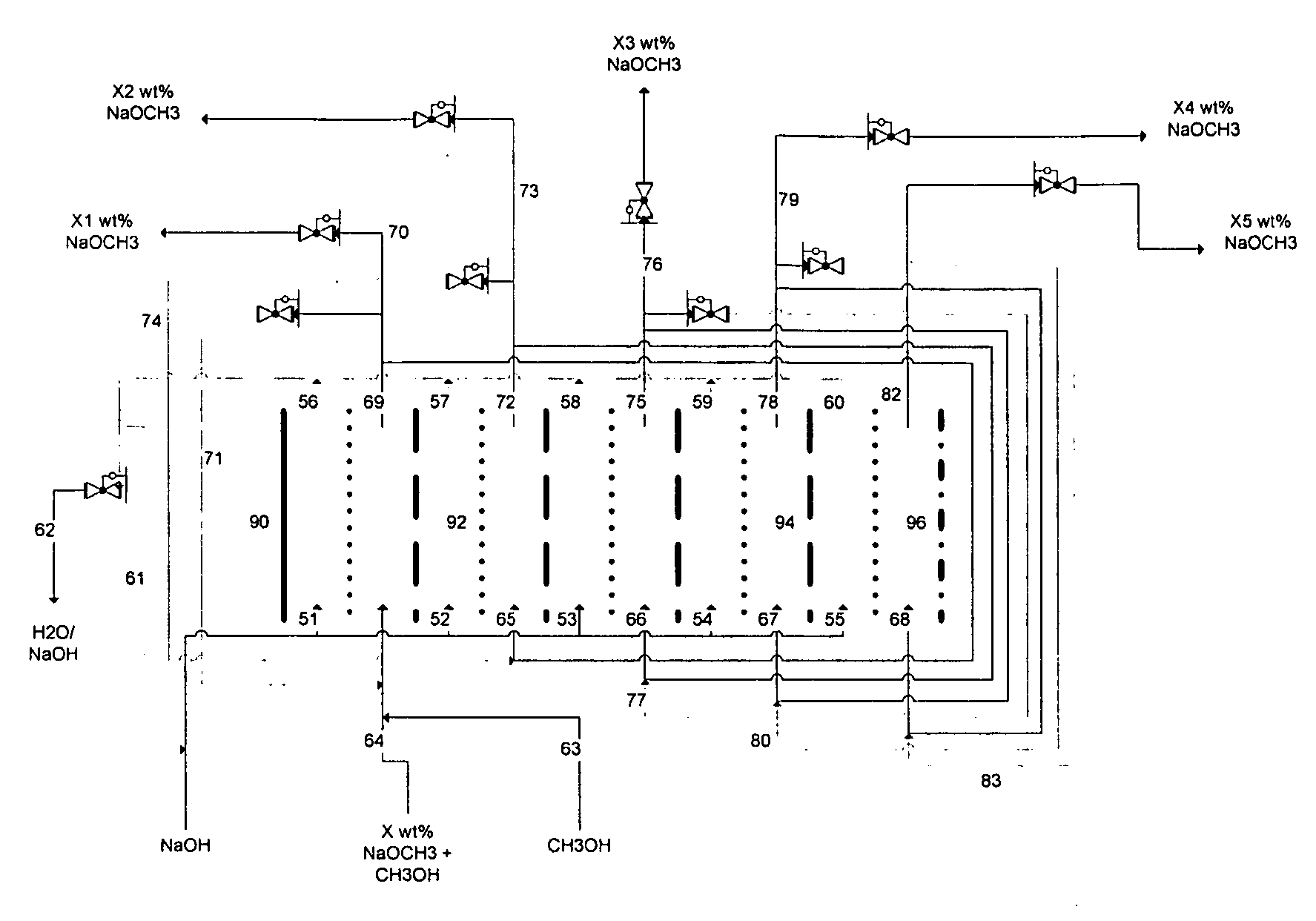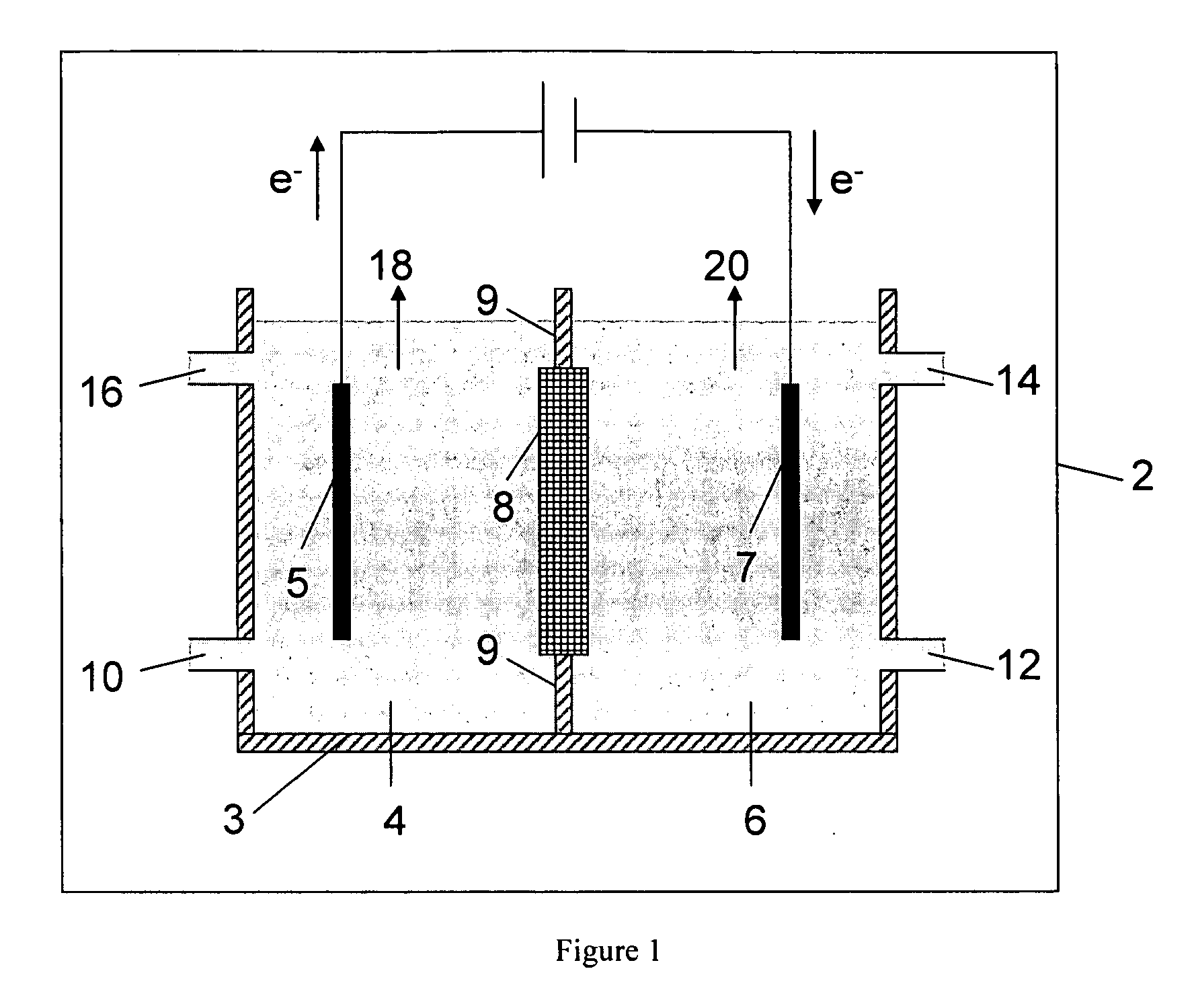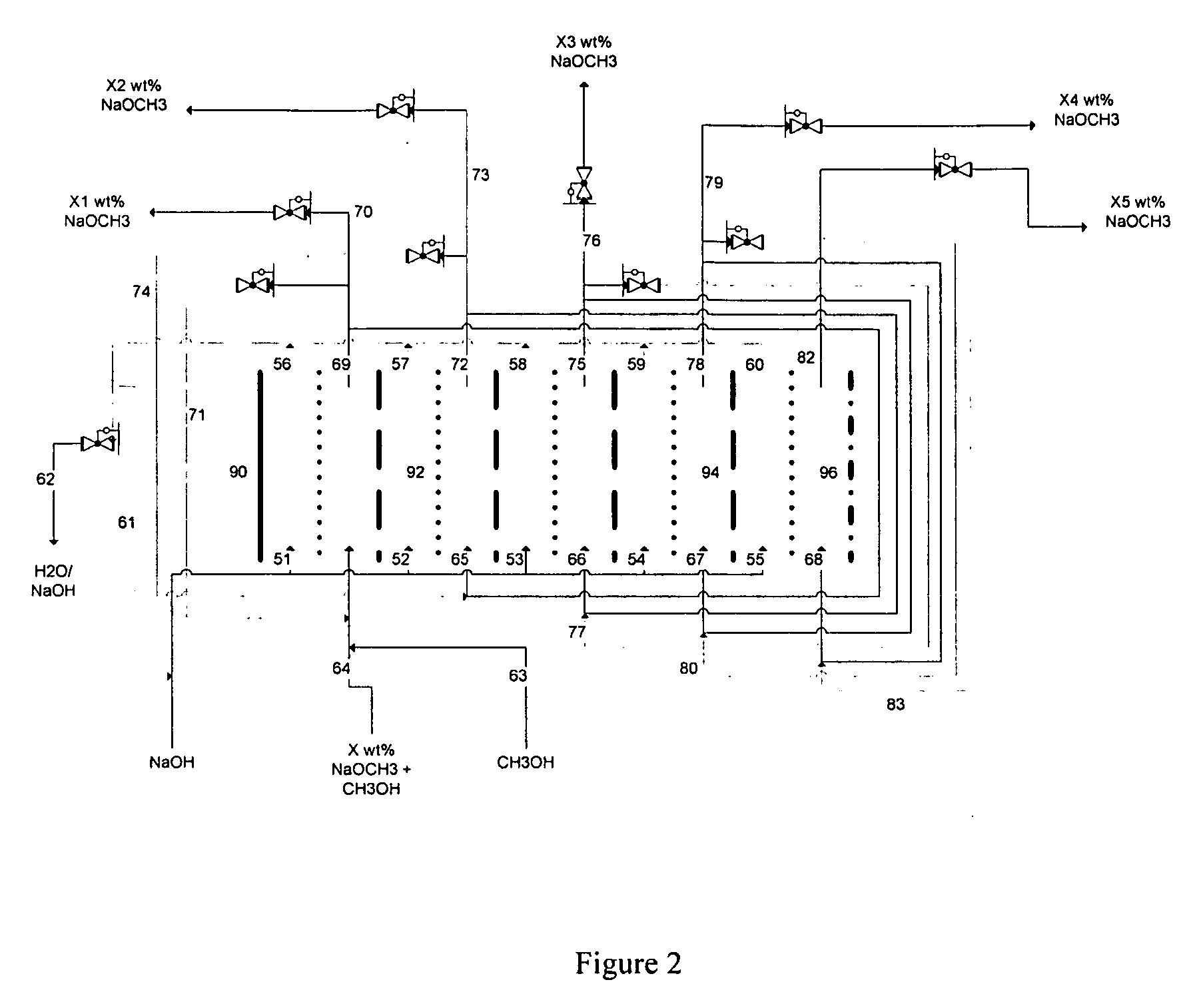Electrolytic method to make alkali alcoholates using ceramic ion conducting solid membranes
a technology of ceramic ion conducting solid membranes and electrolysis methods, which is applied in the direction of electrolysis components, semi-permeable membranes, membranes, etc., can solve the problems of low selectivity of ionic species, inefficient operation of electrolysis cells, and high cost of sodium metal
- Summary
- Abstract
- Description
- Claims
- Application Information
AI Technical Summary
Benefits of technology
Problems solved by technology
Method used
Image
Examples
example 1
[0087] A HDPE scaffold was designed and manufactured at Ceramatec, to house four 5-cm diameter sodium-ion conducting ceramic membranes comprising Na3.1Zr2Si2.3P0.7O12−δ NaSICON material to provide a membrane 8 active area of 60 cm2. This scaffold was tested in a commercially available (ElectroCell MP manufactured by ElectroCell A / S, Denmark) plate-and-frame prototype electrolytic cell similar to the electrolytic cell 2 shown schematically in FIG. 1, to synthesize solutions of sodium methoxide in methanol in the catholyte compartment at various concentrations of sodium methoxide in the range from about 11 weight % sodium methoxide to about 30 weight % sodium methoxide. The ElectroCell MP was operated at 100 mA / cm2 current density and at approximately 50° C. temperature for the anolyte compartment and catholyte compartment. The sodium transfer efficiency of the anolyte and catholyte was above 90%.
[0088] Referring now to FIG. 3, a plot graph showing electrolytic cell voltage versus co...
example 2
[0089] A HDPE scaffold was designed and manufactured at Ceramatec, to house four 5-cm diameter sodium-ion conducting ceramic membranes comprising Na3.4Zr2Si2.4P0.6O12 NaSICON material to provide a membrane active area of 58 cm2. This scaffold was tested in a commercially available (ElectroCell MP manufactured by ElectroCell A / S, Denmark) plate-and-frame prototype electrolytic cell similar to the electrolytic cell 2 shown schematically in FIG. 1, to synthesize solutions of sodium methoxide in methanol in the catholyte compartment at various starting concentrations of sodium methoxide in the range from about 1 weight % sodium methoxide to about 14 weight % sodium methoxide. The cathode was platinum-plated titanium (Pt / Ti) and the anode was nickel. The anolyte compartment contained about 15 weight % aqueous sodium hydroxide solution. The ElectroCell MP was operated at 100 mA / cm2 current density and at approximately 50° C. temperature for the anolyte compartment and catholyte compartmen...
PUM
| Property | Measurement | Unit |
|---|---|---|
| current density | aaaaa | aaaaa |
| current density | aaaaa | aaaaa |
| current density | aaaaa | aaaaa |
Abstract
Description
Claims
Application Information
 Login to View More
Login to View More - R&D
- Intellectual Property
- Life Sciences
- Materials
- Tech Scout
- Unparalleled Data Quality
- Higher Quality Content
- 60% Fewer Hallucinations
Browse by: Latest US Patents, China's latest patents, Technical Efficacy Thesaurus, Application Domain, Technology Topic, Popular Technical Reports.
© 2025 PatSnap. All rights reserved.Legal|Privacy policy|Modern Slavery Act Transparency Statement|Sitemap|About US| Contact US: help@patsnap.com



